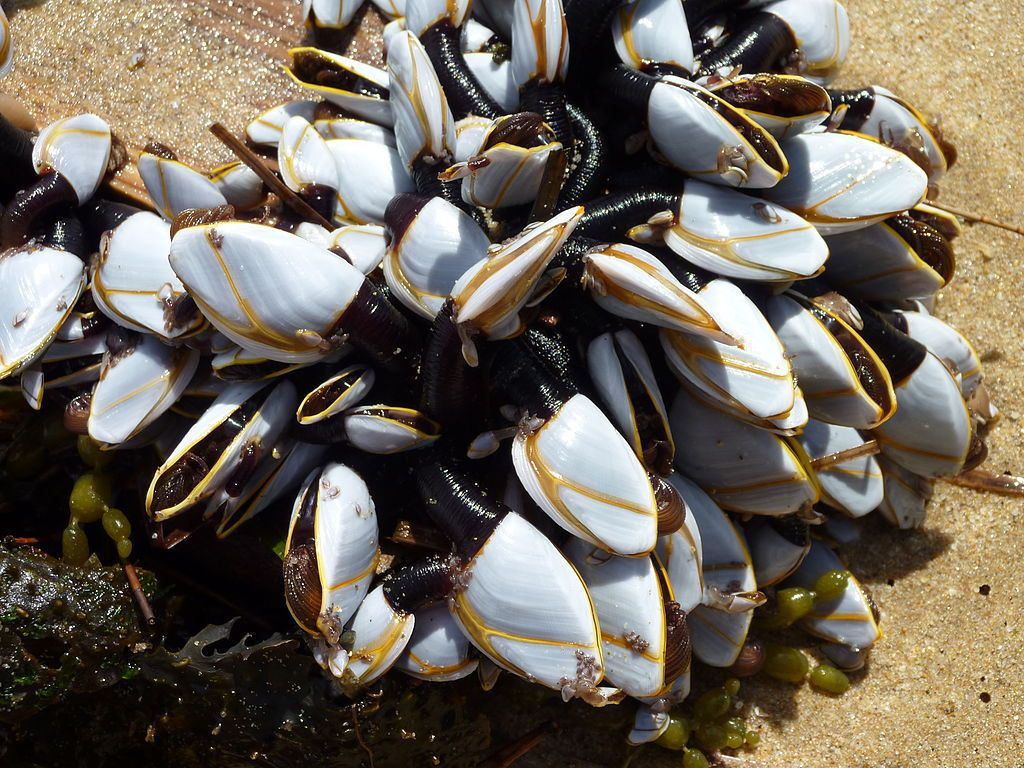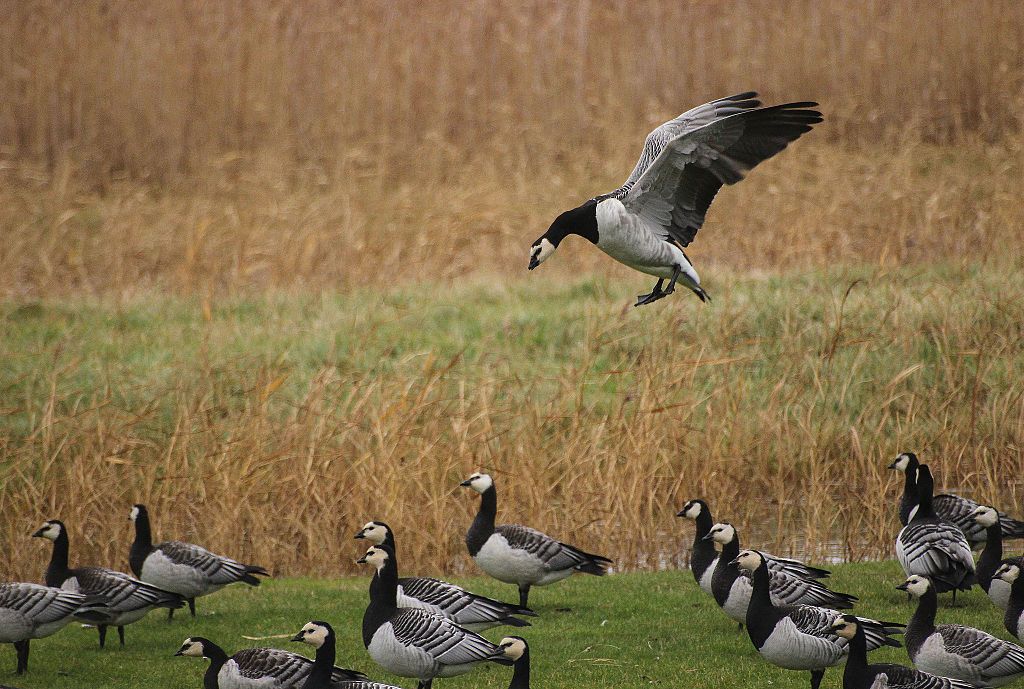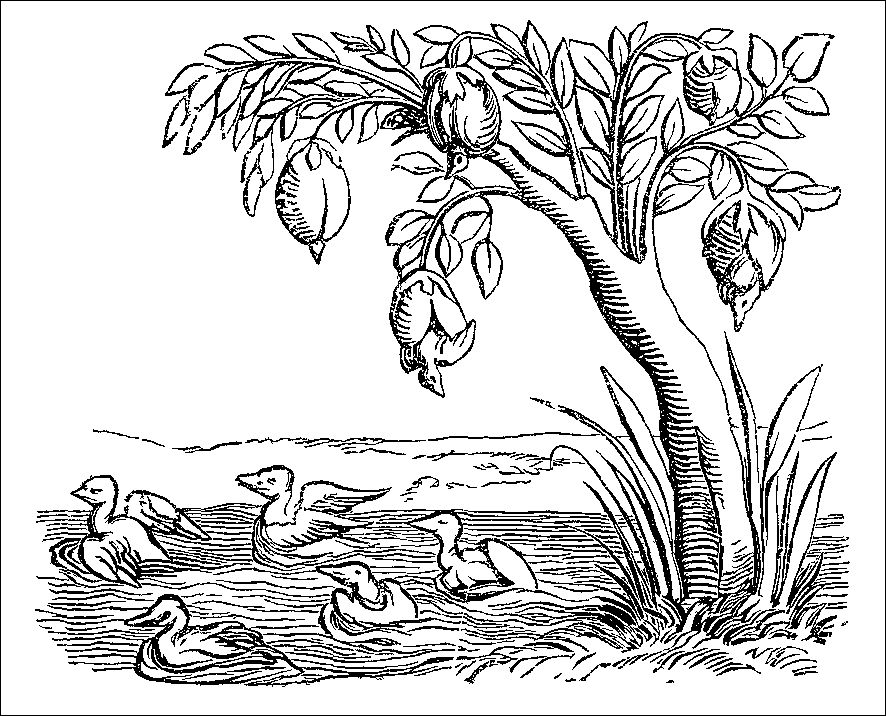
20 February 2021
Goose barnacles often attach themselves to old wood and float from tropical seas to northern shores including the shores of Britain. The barnacles pictured here and in the video below are Lepas anatifera. Their bodies are supported by a long, flexible stalk (a peduncle) that resembles a goose neck.
These fascinating crustaceans are goose barnacles. They live in unmistakably dense colonies, often attaching themselves to marine objects. They occasionally get washed up around our shores. ??
— BBC Springwatch (@BBCSpringwatch) February 17, 2021
How you ever seen a goose barnacle?
? @LucyMcRobert1 pic.twitter.com/mUoOtgIIjG
Goose barnacles and barnacle geese have similar names because people linked them to explain where the geese came from.
Every fall barnacle geese (Branta leucopsis) migrate to Britain and the east coast of the North Sea where they spend the winter. Those in Britain arrive from their breeding grounds in Greenland.

During the day barnacle geese will often feed in fields before taking off en masse, in spectacular aerial displays to return to their roosting sites for the night. ??
— BBC Springwatch (@BBCSpringwatch) February 20, 2021
Have you ever seen barnacle geese?
? @AlisonHitchens, Phil MacDonald & Valeria Degioannis #Winterwatch ?? pic.twitter.com/JW5QKHBXpk
In the Middle Ages people didn’t know that birds migrate so they worked to explain the sudden appearance of full grown geese that they never saw nesting. Their explanation was that goose barnacles floated to shore, took root, and produced a tree that produced barnacle geese. This notion persisted for hundreds of years, from at least the 12th to 16th centuries.

Nowadays that story sounds silly but we shouldn’t be too smug. We still create stories to explain things we don’t understand and spread them quickly on the Internet. In the future our fantastical stories will sound silly, too. I can think of a few about the coronavirus.
(photos from Wikimedia Commons; click on the captions to see the originals)